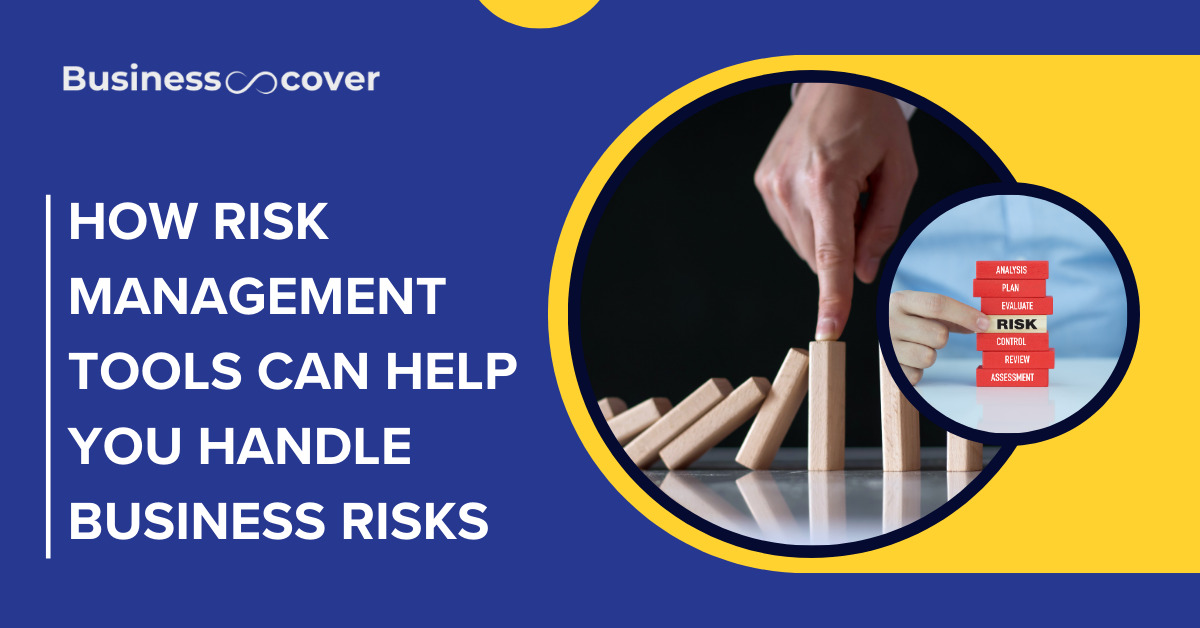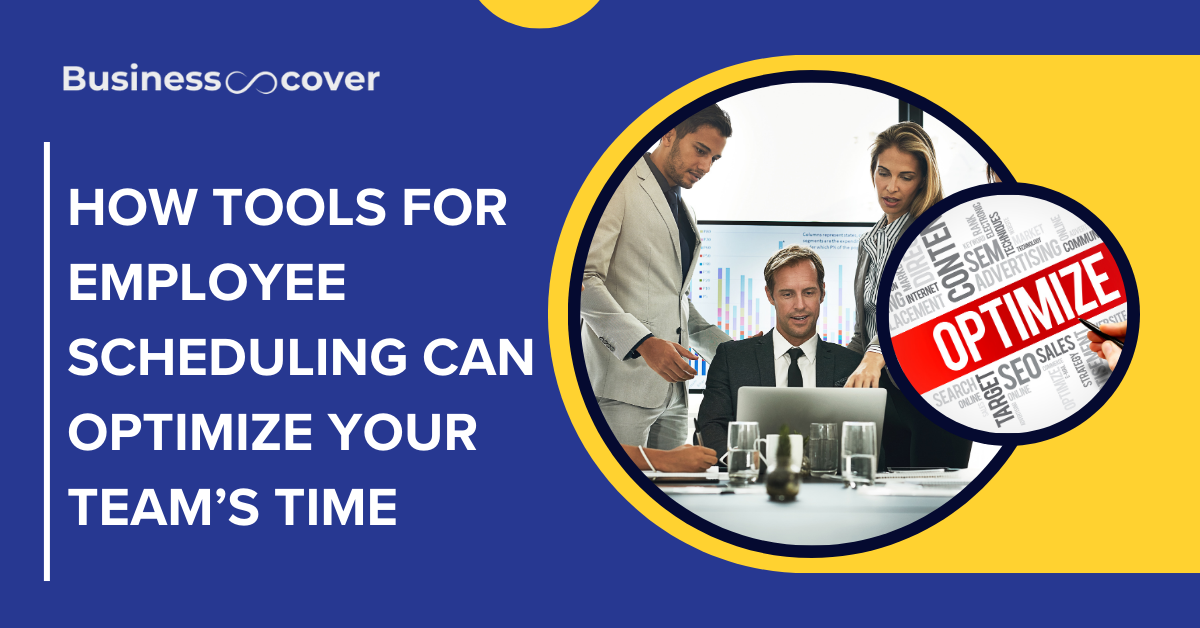understand Risk Management Tools
Risk management enables the business to discover, evaluate and minimize all possible threats that may affect the firm, its capital or profits. These threats can pose serious problems from financial problems, shareholder problems, legal problems technological problems and natural calamities. A good risk management strategy not only provides for minimization of undesired effects but also for the generation of positive effects that will add value to the business. In this article the author focuses on the question of how companies can deal with risks and possible solution using risk management tools.
Key Components of Risk Management
1. Risk Identification
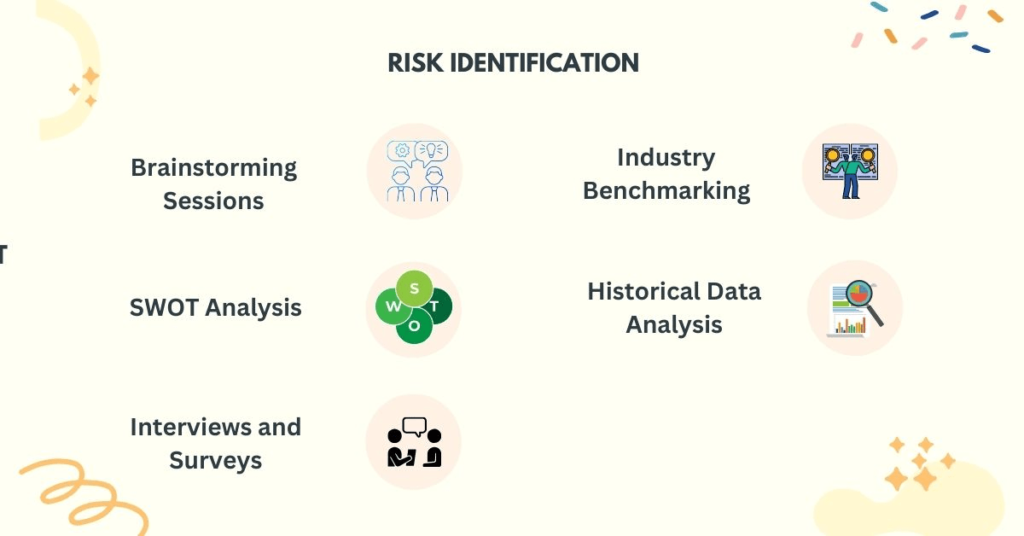
It all starts with assessment of risks; the possibility of having a certain risk is the first thing that has to be established. This calls for an assessment of the operating business environment and, in the process, factors precipitating change both within and outside the firm are identified. Common methods for identifying risks include:
- Brainstorming Sessions: Nick – involvement of the staff of various departments in order to incorporate various perceptions of possible risks.
- SWOT Analysis: Assessing the SWOT to identify risks for the organisation.
- Interviews and Surveys: Collecting surveys with staffs and business partners to get an understanding of perceived risks.
- Industry Benchmarking: Grouping participants by industry to determine where other people generally have similar risks.
- Historical Data Analysis: Identify failures from previous occurrences or hazards that have happened close to occurring in order to analyze patterns of threats or dangers.
2. Risk Assessment
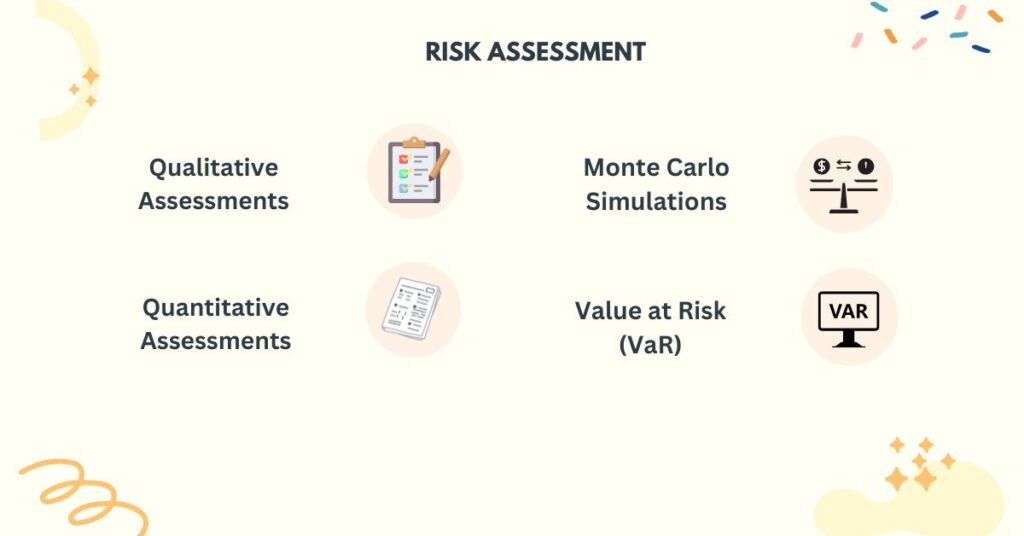
Once something has been identified as a risk, the function that follows is determining the probability of that risk and its propensity to occur. This can be achieved through various techniques:
Qualitative Assessments: Risk classification by risk type (strategic, operation, financial) and using semantic risk rating levels (low, middle, high).
Quantitative Assessments: Using statistical analysis to estimate the risk frequencies and their occurrences. financial implications. Techniques may include:
- Monte Carlo Simulations: Simulations to identify the likelihood of an event through expected values.
- Value at Risk (VaR): Estimating the possible decrease in value of the asset oro portfolio during a fixed period of time of a specific level of confidence.
The examples of these risk management instruments include a risk matrix and a risk scoring system enabling to sort the risks according to their potential impact and likelihood.
3. Risk Treatment
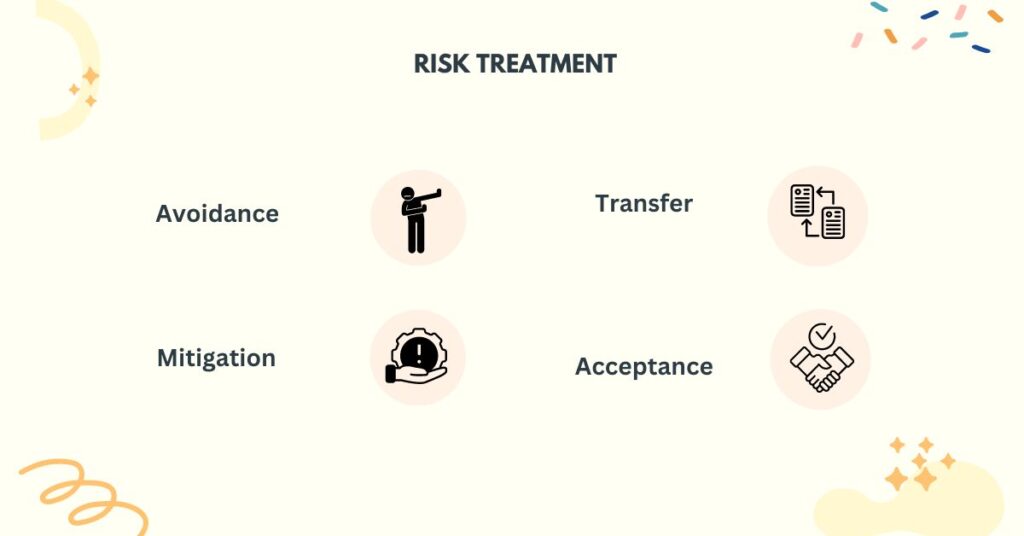
Next, businesses have to consider what to do with risks after they have been identified and evaluated. Common strategies include:
- Avoidance: Changing strategies so as to avoid possible adversities in their entirety (for instance, avoiding taking an aggressive business initiative).
- Mitigation: Measures to minimize realized risks or likelihood of risks (For instance, introducing new technology or techniques).
- Transfer: The act of transferring the risk to another party, often in an insurance context, or delegating some activity.
- Acceptance: Recognizing the risk when its consequence is low or tolerable, sometimes with backup strategies in mind.
4. Monitoring and Review
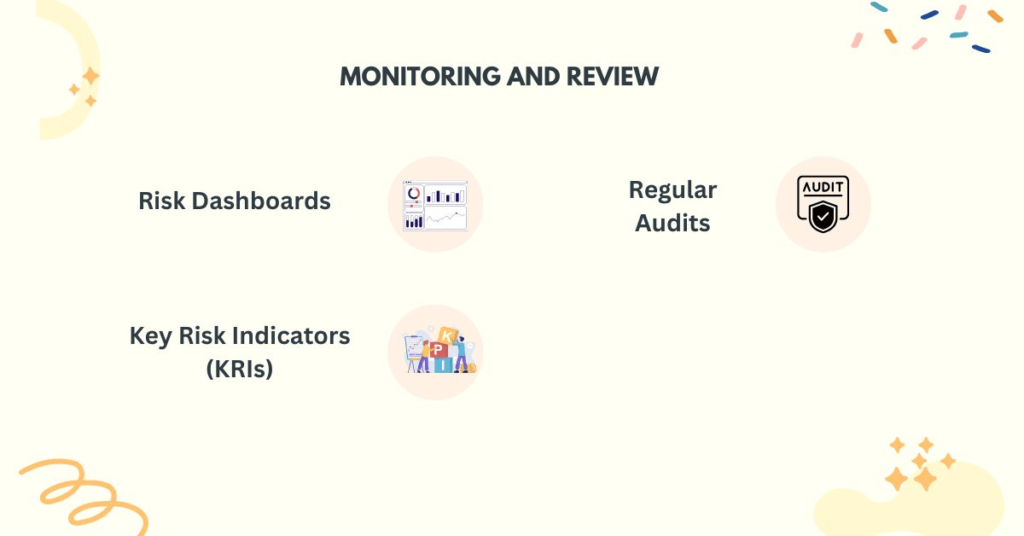
This means that every single risk that has been identified must be closely monitored as well as the efficiency that corresponds to the treatment plans. Routine check-ups help review what new risks are there and if current risk management strategies have to be modified in some way. This process is usually carried out through formation of a distinct risk management staff or a committee within the organisation.
Tools for Monitoring
- Risk Dashboards: Risk meters that give a status report of specific risks at a particular period while carrying information about that area of the business.
- Key Risk Indicators (KRIs): Indications that specific risk levels are rising to the next levels.
- Regular Audits: Periodic check-ups to view companies’ levels of adherence to risk management policies.
Also Read | How Event Management Tools Can Help Plan and Run Successful Events
Advantages of Risk Management Tools
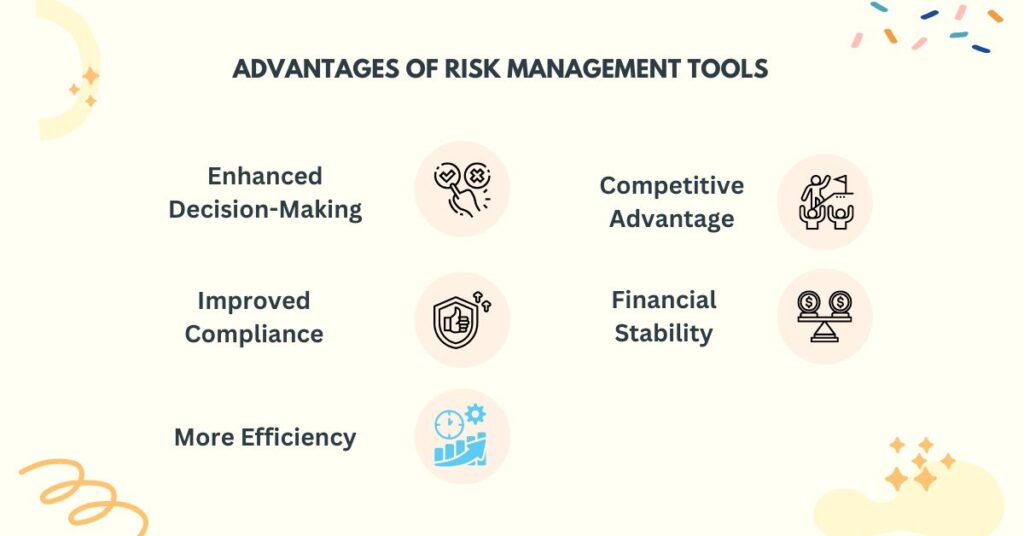
Implementing risk management tools offers several advantages:
1. Enhanced Decision-Making
Knowing possible risks helps entrepreneurs to make a sound decision that would meet strategic goals. For example:
- Business investments can be better compared concerning potential risks entailed on their implementation and realization.
- A company can evaluate market volatility in a particular product that is going to be introduced in the market.
2. Improved Compliance
A formal framework over acts as a guideline in implementing regulatory rules and other company policies on the management of risks. As it is the case with industries like finance, healthcare, and manufacturing, compliance is usually high.
3. More Efficiency
Effective methods of handling risks mean that efficiency of the organization is likely to increase. For instance:
- Self-organizing risk assessments decrease the number of manual risk assessments done.
- Situations where the occurrence of accidents was recorded has shown that standard procedures shorten the time taken to address an incident.
4. Competitive Advantage
Managers who accept that risks are inevitable are usually rewarded by stakeholders who in turn improve the image of such companies in the market. This can lead to:
- New and improved customer base and customer loyalty.
- Improved investors’ relations as a result of perceived stability.
5. Financial Stability
Thereby, managing risks is in a position to prevent aspiring financial losses before they exacerbate by recognizing prospective dangers before they become a reality. Companies that continually monitor loss exposure are more likely to overcome downfall from adverse economic conditions.
Challenges in Risk Management
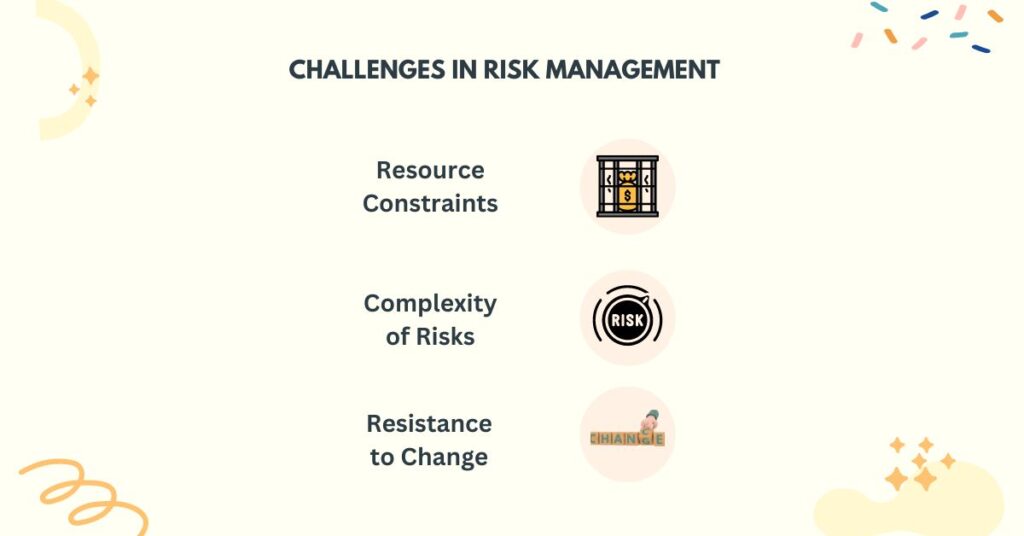
While the benefits are significant, businesses may face challenges in implementing effective risk management strategies:
1. Resource Constraints
Small organisations will be short of adequate resources to conduct thorough risk analysis and risk control. They might struggle with:
- Lack of some exclusive needed instruments or applications.
- Lack of adequate training of employees in the firm on risk management policies.
2. Complexity of Risks
The postmodern business environments are complex where risks interconnect different aspects of operations and this complicates management processes. For example:
- A security threat might result in monetary loss only but it can also harm the organization’s reputation and it may also face legal issues.
3. Resistance to Change
The use of new processes or tools in managing risks may be resisted by the employees hence the need to embrace change management. Overcoming resistance involves:
- Making sure that there is a proper communication of what changes would bring to the organization.
- The second major strategy of the process of accepting the development is to involve the employees.
Conclusion
In modern business environment strong risk management represents the major factor of organization’s stability and its further development.Using specific risk tools – risk assessment matrices, insurance, risk departments, and IT solutions – will help organizations manage risks and opportunities more effectively.
Taking a preventive measure does not only safeguard the respective organizational resources but also strengthens organizational readiness.In this regard, the continuity of the changes is given by the strengthened activities of businesses and firms in the context of the environment’s changes; thus, it is possible to conclude that strengthening sound risk management practices will be critical to building stability in the business societies of this world.

